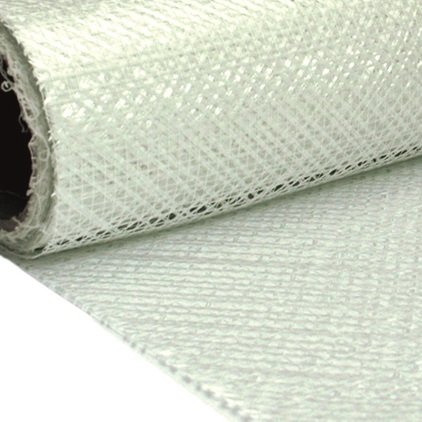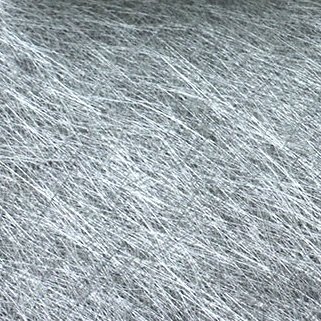



A1 Triaxial glass fibre 160 gr/m²
A1 Triaxial glass fibre is used in combination with A1. In this way, A1 objects can be created or covered in moulds with A1. Triaxial glass fibre strengthens the A1 objects.
- A1 Triaxial glass fibre has an open structure and has been specially developed for A1.
- It is flexible and easy drapable, even over round shapes.
- Lightweight (160 gr/m²) yet very strong.
- After use of 4 layers in combination with A1 will result in strong objects.
A1 Quadriaxial glass fibre 210 gr/m²
A1 Quadraixial glass fibre fibre is used in combination with A1 during the lamination process. It strengthens A1 objects.
A1 Quadriaxial glass fibre:
- Has been developed specifically for A1.
- Is flexible, giving it good drapability on any shape, including round shapes.
- Is lightweight (210 gr), but still very strong.
- Gives strength in 4 directions.
C-veil 27 gr/m²
C-veil glass is a thin glass fleece that is mainly used as a (smooth) finishing layer. It contributes little to improving strength.
CSM 150 gr/m²
There are also good experiences with the use of CSM 150 gr/m² as this has a relatively open structure.
Use of natural fibres
Natural fibres are offered as an alternative to glass and basalt fabrics. A major disadvantage of these fibres is the tendency to absorb and retain moisture, which disturbs the moisture balance in the A1. This moisture absorption can also cause fungi to develop and eventually affect the A1 object. For outdoor applications, the use of natural fibres is therefore not recommended.
How do you process A1 Triaxial fibre?
A1, unlike polyester, does not absorb A1 Triaxial fibre but clamps it in between the different layers of A1. That’s why our glass fabric has an open structure that allows the different layers of A1 to connect to each other and to clamp in the A1 Triaxial fibre.
The best time to start laminating over the top layer is when it is drying but still feels slightly moist. immediately after the set time has expired.
The best result is achieved when the laminating layers are applied wet to wet. An advantage of A1 is that after a few days you can still apply A1 with A1 Triaxial fibre with a good adhesion. However, the substrate must first be coated with a wet layer of A1 before the A1 Triaxial fibre can be applied.
Even with larger surfaces it can happen that the A1 already reacts (is hard) before a new layer of A1 Triaxial fibre can be applied. This can be solved by applying a new thin layer of A1 or by slowing down the reaction time of the A1 using A1 Retarder.



Test values for mechanical properties
For the determination of the mechanical performance of A1 composite laminate panels have been made by hand lay-up of glass fibre (Triaxial Fibre 300, 160 g/m² ) with A1 mixture. The laminated panels have been made without a gelcoat-layer (non-reinforced resin layer) and without any other additives. Laminate panels were built up on a flat, smooth panel as a mould. All reinforcement layers have been stacked with the same orientation.
For more information see our report:
Design Guide A1 structures



